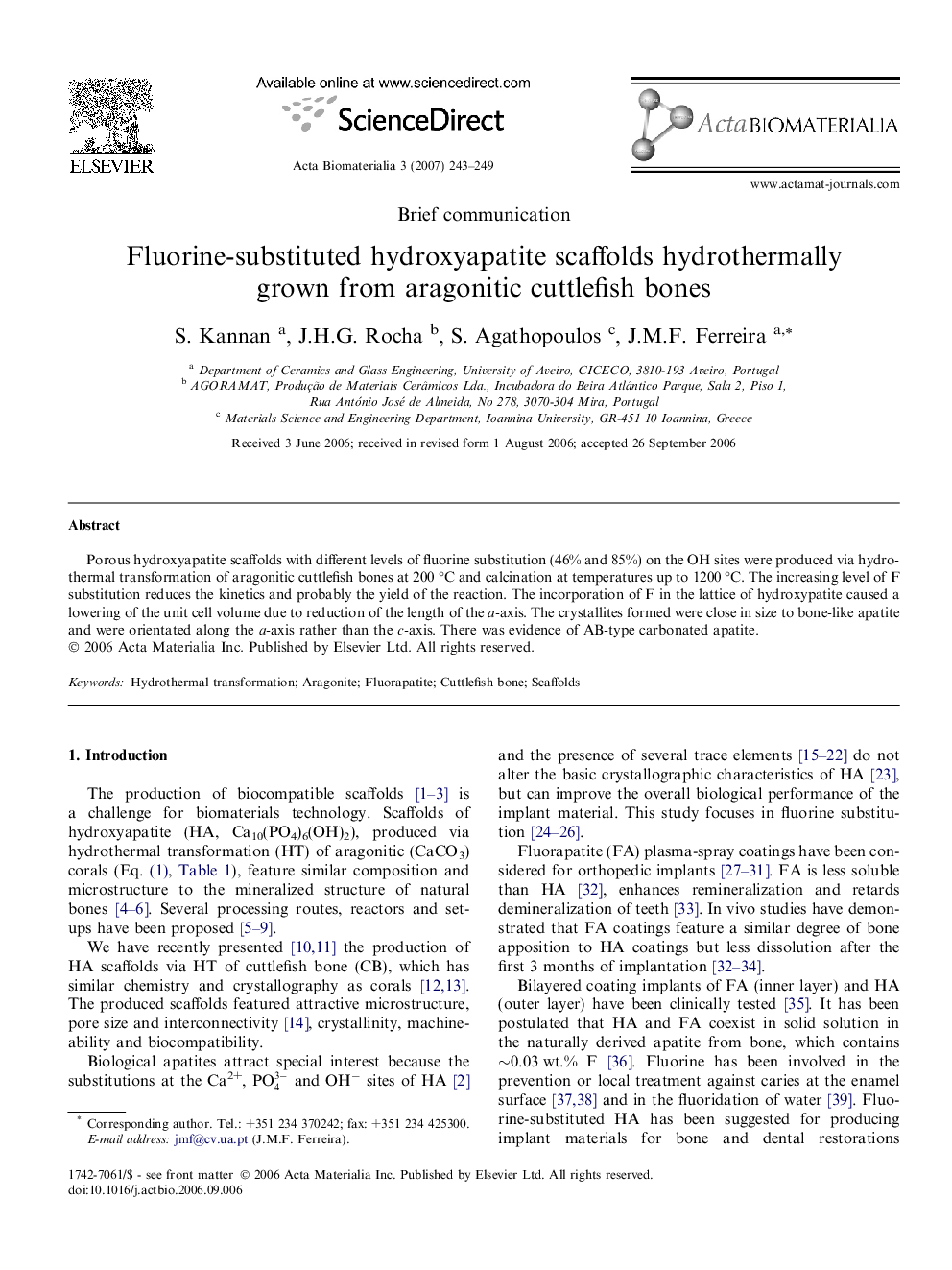| Article ID | Journal | Published Year | Pages | File Type |
|---|---|---|---|---|
| 2404 | Acta Biomaterialia | 2007 | 7 Pages |
Abstract
Porous hydroxyapatite scaffolds with different levels of fluorine substitution (46% and 85%) on the OH sites were produced via hydrothermal transformation of aragonitic cuttlefish bones at 200 °C and calcination at temperatures up to 1200 °C. The increasing level of F substitution reduces the kinetics and probably the yield of the reaction. The incorporation of F in the lattice of hydroxypatite caused a lowering of the unit cell volume due to reduction of the length of the a-axis. The crystallites formed were close in size to bone-like apatite and were orientated along the a-axis rather than the c-axis. There was evidence of AB-type carbonated apatite.
Related Topics
Physical Sciences and Engineering
Chemical Engineering
Bioengineering
Authors
S. Kannan, J.H.G. Rocha, S. Agathopoulos, J.M.F. Ferreira,
